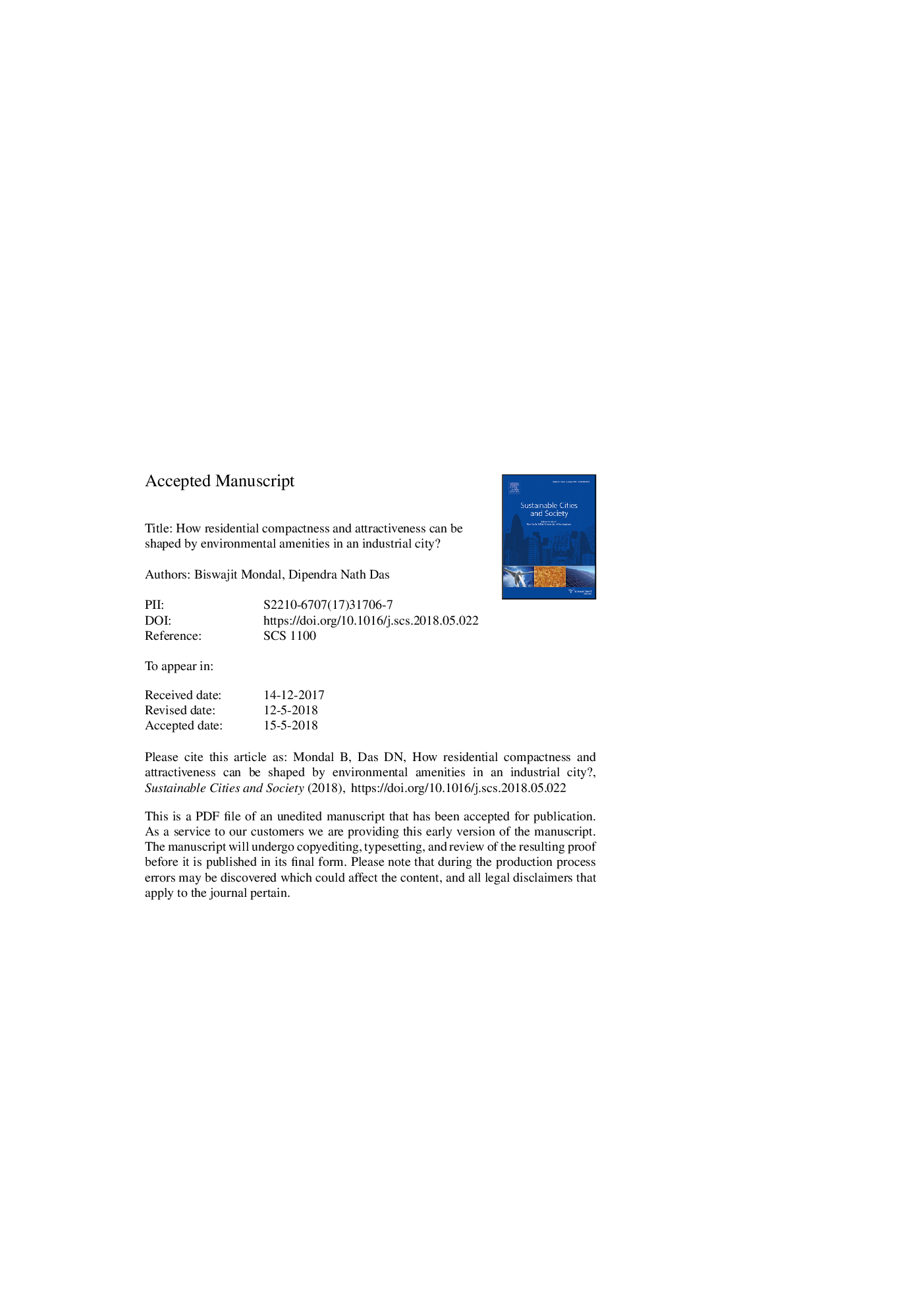| کد مقاله | کد نشریه | سال انتشار | مقاله انگلیسی | نسخه تمام متن |
|---|---|---|---|---|
| 6775022 | 1432007 | 2018 | 43 صفحه PDF | دانلود رایگان |
عنوان انگلیسی مقاله ISI
How residential compactness and attractiveness can be shaped by environmental amenities in an industrial city?
ترجمه فارسی عنوان
چقدر فشرده سازی و جذابیت مسکونی می تواند توسط امکانات زیست محیطی در یک شهر صنعتی شکل گرفته شود؟
دانلود مقاله + سفارش ترجمه
دانلود مقاله ISI انگلیسی
رایگان برای ایرانیان
کلمات کلیدی
پراکندگی مراکز شهری، امکانات آب و هوا، جذابیت مسکونی، ارزیابی ثروت، رگرسیون وزنی جغرافیایی، احمدآباد،
موضوعات مرتبط
مهندسی و علوم پایه
مهندسی انرژی
انرژی های تجدید پذیر، توسعه پایدار و محیط زیست
چکیده انگلیسی
At a time when rapid urbanization and environmental degradation continue to be serious issues of concern, there is an escalating need to promote sustainable living across the world, with due emphasis on environmental amenities. The economic value of these amenities cannot be overlooked either, as they are inevitable in undertaking compact city plan. However, due to inadequate understanding of economic and aesthetic value of environmental amenities developers, decision-makers and policy makers ignored its importance, resulting in massive exploitation. This study conducted in the city of Ahmedabad in India, explores the significance of local environmental amenities and residential attractiveness to elicit an urban expansion pattern. The geographically weighted hedonic regression is employed in this research to estimate the value of local amenities and spatial clustering is used to examine the environment induced residential pattern. Outcome shows that in addition to structural attributes, local residents are willing to pay for LST, NDVI, air quality, and tree cover, in spite of these services being exceedingly location-specific. Besides, widespread residential spillover is observed in association with environmental amenities. These outcomes of the study could be substantially useful to understand the importance of environmental services and also be beneficial to commence a regional public policy.
ناشر
Database: Elsevier - ScienceDirect (ساینس دایرکت)
Journal: Sustainable Cities and Society - Volume 41, August 2018, Pages 363-377
Journal: Sustainable Cities and Society - Volume 41, August 2018, Pages 363-377
نویسندگان
Biswajit Mondal, Dipendra Nath Das,
